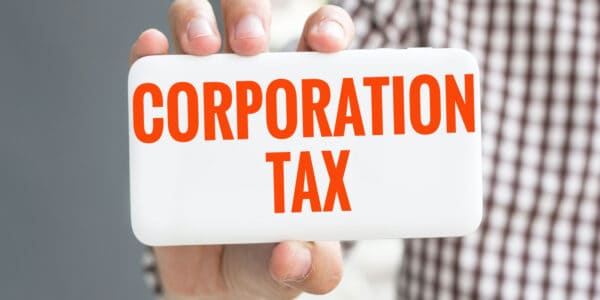Preparing a Company Tax Return is a statutory requirement of any company that is active for Corporation Tax. As the director of a limited company, it is your legal duty to ensure that your company files a tax return with HMRC once a year by the given deadline, along with full annual accounts and Corporation Tax calculations.
This guide explains how to prepare and deliver a Company Tax Return and accounts, the date by which these mandatory filings must reach HMRC, and the penalties imposed if you miss the deadline.
How to complete a tax return for a limited company
The purpose of a Company Tax Return is to report your company’s income, profit or loss for Corporation Tax, and how much tax it owes for its most recent accounting period.
If your company is trading (or receiving any other form of income) and registered for Corporation Tax, you are legally required to prepare a tax return every year. The due date is 12 months after the end of your company’s accounting period for Corporation Tax.
With limited exceptions, you must submit your Company Tax Return (form CT600) using HMRC’s online service. To do so, you will require:
- full (statutory) annual accounts – the accounts must be ‘balanced’, which means that your company’s total assets must match what it owes
- your Government Gateway user ID and password – if you don’t have a user ID, you will need to create one when you use HMRC’s online service for the first time
If you are filing your accounts with Companies House at the same time, you will also need your Companies House password and authentication code. You should have received these details when you set up your company
Filing a tax return by post
You may only file your tax return by post using the paper CT600 form in the following situations:
- you have a reasonable excuse for being unable to file online
- you wish to prepare and file in Welsh
If you need to file on paper, you must complete and send form WT1 with your Company Tax Return to explain why you are doing so.
The information you need to include in a Company Tax Return
Form CT600 is extensive, but it is designed to accommodate every type of company. You will find that many sections are not applicable to your company, in which case you will simply leave them blank or indicate that they do not apply.
Below is a brief overview of some of the main sections of the Company Tax Return that you will most likely need to complete:
Company information
- Full registered name of the company
- Company registration number – you can find this on your certificate of incorporation, official correspondence from Companies House, or by searching the Companies House register online
- Company Unique Tax Reference (UTR) – you can find your company UTR in official correspondence from HMRC, including the notice to file a tax return
- Type of company – most companies enter 0 (zero) in this field
About this return
- Period of the return – enter the start date and end date of the accounting period to which the return relates
- Confirmation that you are attaching annual accounts and computations for the period to which the return relates, or to a different period
Tax calculation
- Turnover – enter the company’s total trading turnover from all sources. You don’t have to complete this section if your company is an investment firm or a unit trust.
- Income – enter the total of all profits and gains from trade and other sources, including profits arising from any trades carried on wholly outside the UK, less any trading losses from earlier periods.
- Chargeable gains – specify the total chargeable gains for the period, less allowable losses, including losses brought forward from an earlier period.
- Profits before deductions and reliefs – enter the total profits on which Corporation Tax is chargeable before the application of any deductions and reliefs.
- Deductions and reliefs – specify any losses, management expenses, capital allowances, and reliefs. You must then enter the profits chargeable to Corporation Tax.
- Tax calculation – work out how much Corporation Tax your company owes, specifying the amount of profit that is chargeable at each rate of Corporation Tax, the tax due, and any Marginal Relief that the company is entitled to.
Depending on your company’s activities, you may have to complete other sections with details about tax credits, outstanding or overpaid tax, overseas expenditure, and double taxation relief.
HMRC’s official Company Tax Return guide provides more information on what you need to include on form CT600.
When is my Company Tax Return due?
The deadline for sending a Company Tax Return and accounts to HMRC is 12 months after the end of your accounting period for Corporation Tax.
Your accounting period is the time covered by the tax return. It must not be longer than 12 months, but it can be shorter. Typically, it corresponds with the financial year covered by the annual accounts.
You may find that your company’s first accounts after incorporation cover a period of more than 12 months. This is common. In such instances, you will need to prepare two tax returns – one for the first 12 months, and the other for the additional time covered by the accounts.
In subsequent years, you will normally file just one Company Tax Return, with a 12-month accounting period that matches the 12-month financial year in your accounts.
You will need to prepare your tax return in plenty of time because Corporation Tax is due 9 months and 1 day after the end of the accounting period – 3 months before your tax return deadline.
HMRC will send a ‘Notice to deliver a Company Tax Return’ to your registered office address as a reminder. You will also receive a Corporation Tax bill that states the payment deadline and explains how to pay.
Do all companies file tax returns?
All companies are required to prepare and file an annual Company Tax Return with HMRC if they are ‘active’ for Corporation Tax. This includes:
- private companies limited by shares or limited by guarantee
- unlimited companies
- public limited companies (PLCs)
- charities and unincorporated associations
- community interest companies
Dormant companies do not have to submit tax returns or accounts to HMRC if they have been dormant for the entire duration of an accounting period. However, you will still need to file a tax return for any period of activity prior to your company becoming dormant.
If you run a business as a sole trader or a partnership, you do not prepare a Company Tax Return. You must complete a Self Assessment tax return each year instead.
Do I have to use an accountant?
You can prepare and file your Company Tax Return yourself if you feel able to do so. Alternatively, you can ask an accountant to do it for you. Appointing an accountant will be an extra expense, but it is often worth it because they can advise on the different allowances and reliefs available to reduce your Corporation Tax bill.
Accounts and tax returns can be complex and stressful, so outsourcing these important tasks to an accountant can help relieve some of the burden of running a limited company.
If you decide to use an accountant, you must tell HMRC that you are authorising them as an agent to handle your company’s tax affairs. Your accountant will tell you how to do this.
If you make a mistake on your Company Tax Return
If you notice a mistake on your Company Tax Return within 12 months of the filing deadline, you should be able to make the necessary changes to correct the error.
You can do this using commercial software, by sending a paper return or writing to your Corporation Tax office, or via HMRC’s online services.
If you have questions or need any help, you can call HMRC’s helpline.
If your Company Tax Return is late
If you fail to deliver your Company Tax Return on time, you will have to pay a late filing penalty. The amount depends on how late you file the tax return after the deadline:
- 1 day late – £100
- 3 months late – an extra £100
- 6 months late – 10% of your estimated Corporation Tax bill
- 12 months late – an extra 10% of any unpaid Corporation Tax
HMRC will increase the £100 penalties to £500 each if you deliver your tax return late 3 times in a row.
You can write to your Corporation Tax office to appeal a late filing penalty, if you believe you have a reasonable excuse. You will find this address on any recent tax correspondence from HMRC.
Thanks for reading
Preparing a Company Tax Return is one of several important statutory requirements that you need to be aware of when you set up a limited company. It can be tricky if you don’t have any experience, so it is often best to enlist the help of an accountant.
We hope that this post has helped you to understand the process required to file a Company Tax Return, the information you need to include, and the date by which it must be delivered to HMRC.
If you have any questions about this topic or anything else related to setting up and running a limited company in the UK, please leave a comment below or get in touch with our company formation team.
Please note that the information provided in this article is for general informational purposes only and does not constitute legal, tax, or professional advice. While our aim is that the content is accurate and up to date, it should not be relied upon as a substitute for tailored advice from qualified professionals. We strongly recommend that you seek independent legal and tax advice specific to your circumstances before acting on any information contained in this article. We accept no responsibility or liability for any loss or damage that may result from your reliance on the information provided in this article. Use of the information contained in this article is entirely at your own risk.












Join The Discussion